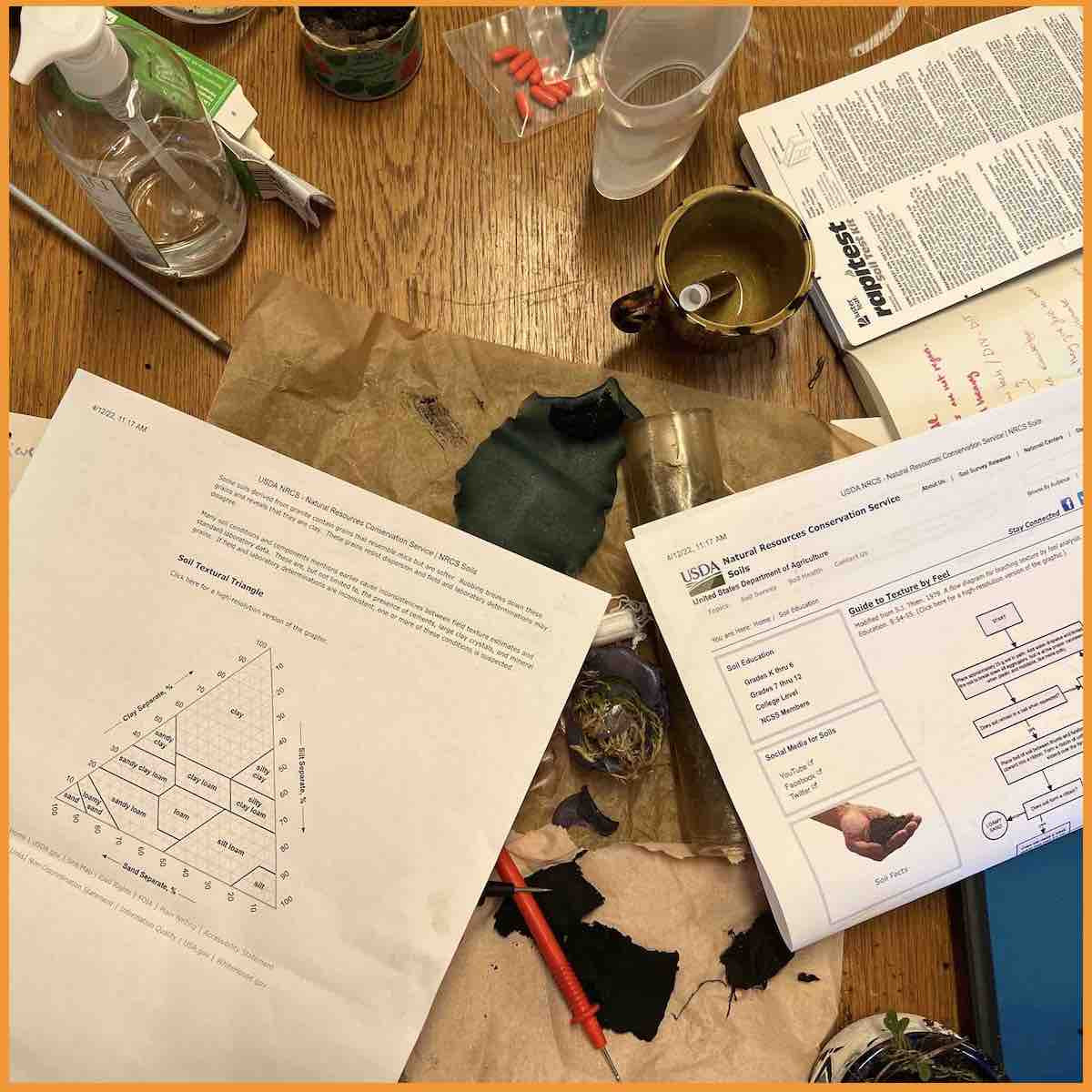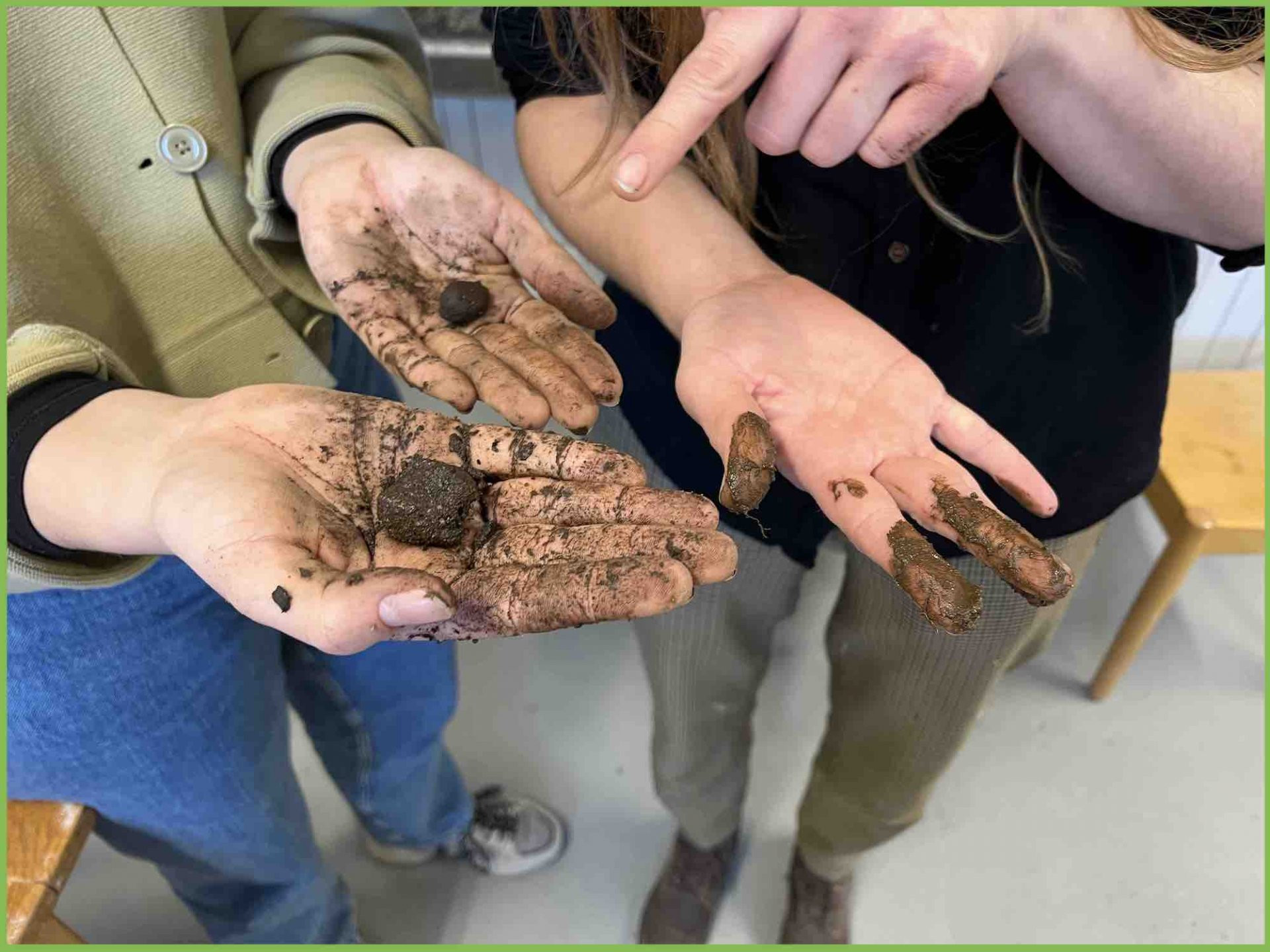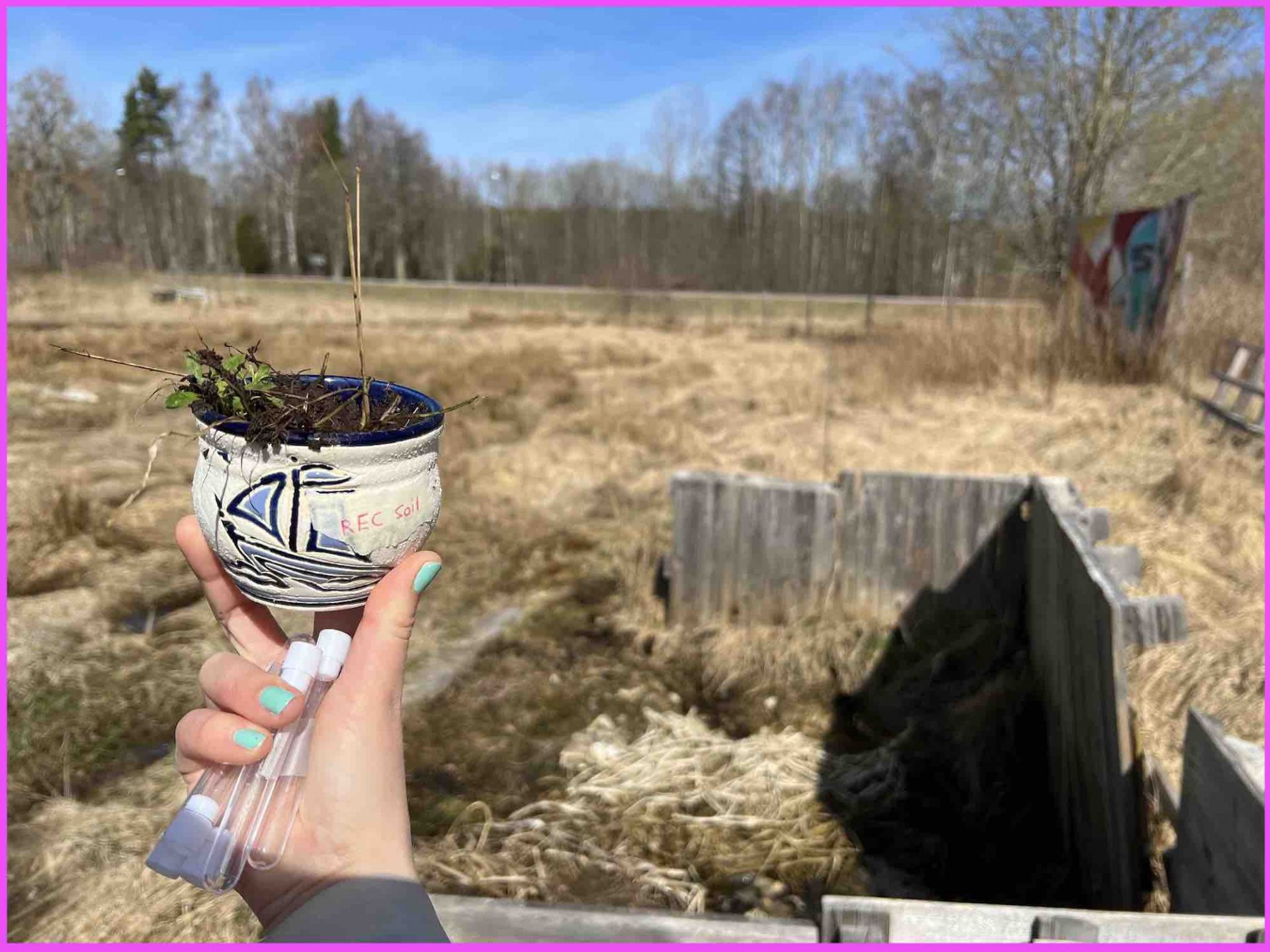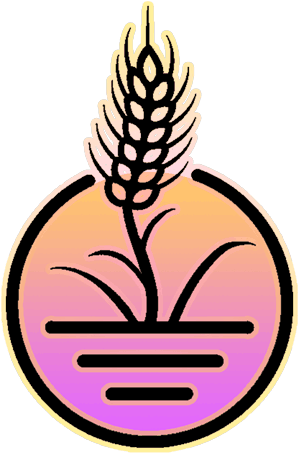Soil sensing workshop reflections - pt.2
Explorations in more sensory based and immediate forms of soil testing
Continuing on from the first post on our soil sensing workshop, wanted to also make sure to say something about the more hands-on soil sensing we did during this workshop. In preparing for the workshop, we revisited some recently purchased books to see what they might have on soil sensing. In searching around for texts on permaculture and regenerative agriculture, it is hard not to notice how many of the authors of these texts are what might be called white dudes with beards (I say this as a white dude with a bit of a beard). But there are also others writing in and around the topic, including what has been one of the most inspriational books encountered so far in the project, Leah Penniman's really lovely and helpful Farming While Black: Soul Fire Farm's Practical Guide to Liberation on the Land. Would like to talk more about this text in a future note, especially on how it weaves in issues of empowerment, the economic and also the sacred into those of farming, but for the purposes of this workshop it was the brief section on traditional afro-indigenous methods of soil testing that caught our attention.
In addition to discussing more common scientific forms of soil testing, the section also discusses other ways in which soils have for many millenia been tested in cultures such as those of the Yoruba people in Nigeria. These include activating different senses, including vision for checking topsoil color for both fertility and land degredation, touch for texture and detecting soil moisture-holding capacity, taste and smell to assess soil acidity and salinity, to name just a few (Penniman, p.88-92). Wanting to try such ostensibly more immediate sensory based forms of soil testing, we turned to the flow diagram for feel anaylsis testing on the "Natural Resources Conversation Service" website that Penniman's text refers to.

(photo courtesy of Marie Louise Juul Søndergaard)
In your own hands
Based on S.J. Thien's "A flow diagram for teaching texture by feel analysis" from 1979 (https://www.nrcs.usda.gov/wps/portal/nrcs/detail/soils/edu/?cid=nrcs142p2_054311), and despite also having an instructional nature of its own, this approach proved a much more engaging exercise for soil sensing when compared to the NPK test. With its easy to follow yes/no format, we were soon up and running, wetting down the two different soil sources we had, forming them into balls in our hands and slowly activating our different senses as we progressed throw the branching flowchart diagram (for more on flowcharts as a potentially helpful form of often colletive knowledge distribution, see the recent book on Aesthetic Programming by our friend and regular collaborator Winnie Soon: https://aesthetic-programming.net/pages/the-book.html). Nicest from my perspetive was the multisensory way in which one could feel and hear differences in the graininess and texture of the two soils when rubbing them between one's fingers while holding close to the ear. And there was also the way in which the soil smeared itself onto the skin, leaving coloured residues and textures visible on one's hands afterwards.
We were activated as partcipants in this simple and practical way of being able to categorise soil into one of twelve soil textures with our hands (the farm soil was silty clay). At the different sides of the table we sensed with fingers, ears, eyes, test tubes, electrodes, beetroots, and more. In the context of soil, the immediacy of the hand-based tests and the side experiments with beetroot juice created the strongest moments of feedback between the soil and participants. An art of categorizing and noticing that has the result of not only providing information for the purpose of potentially enhancing planted yields, but also connecting one directly to soils and their varied textures and forms of liveliness while doing so.

(photo courtesy of Marie Louise Juul Søndergaard)
Modes of sensing and testing have become both popular and somewhat of a paradigm at present - often at the expense of certain ways of sensing and knowing. But sensing and ways of knowing carry within them potentials of activation, of creating new understandings, perspectives and also drives to know further - or otherwise. Reflecting on this and other moments in the project so far, materializing and embodying instructions can be invaluable for creating the kinds of bonds of relation and interconnectedness that can lead to not only productive farming, but a more keen sensitivity to the soils one is connected to. Testing and sensing in such ways can regenerate these important interrelations that otherwise might be left unactivated (untouched) in other modes of testing and sensing.
Companion sensing
Zeenath Hasan - one of the workshop participants and our prefect and colleague in the Department of Design as well as the organizer of The Dirt project run on the farm - had a very nice way of speaking on these issues when refelecting on elements of the workshop a few days afterwards. Riffing on practices of companion planting (e.g., https://growing-guides.co.uk/the-history-of-companion-planting/) and things such as the beetroot sensing, Zeenath asked what could a practice of what she termed companion sensing be in a context of soil health? In her words, "'companion sensing' - a proposal to sense with companion species. An inter-species sensibility if you will. Regarding phenomena in its intra-active wholeness... away from the mono-causal, industry specification of growth measurements. Where relations of abundance and scarcity (nutrition in soil) are based on observations in 'real' time. A way to practice vital politics of co-existing through intensifying."
Such a rich way of speaking on the potentials of sensing practices. Calling for a companion mode of sensing that deliberately activates relational, interspecies and intra-active modes of co-existence. One that can be integrated into other related companion practices such as companion planting, the use of interspecies nutrient strategies such as biofertilizers and the integration of livestock grazing in cropping systems. Understanding soil in such instances as as an integral relational being in its own right. And with such interdependent relations in mind, working to create and continue practices that work to intensify the lively, vital politics and ties of soil through our senses and also the tools and practices we share and discover.

(photo courtesy of Marie Louise Juul Søndergaard)
In regards to our own work with energy prototypes, I think a question to take forward in this respect is how can we imagine and create companion prototypes, technologies, tools or practices that intensify or cultivate these kinds of existent and emerging ties and regenerative feedback loops with soil?
Thank you to Zeenath for this naming of companion sensing and sharing of thoughts. To Nadia and Marie-Louise for bringing their deeply relational practices to Växjö for sharing and inspiring us all. And to partcipants for the sharing of stories and collective activations of senses and more during the workshop. 🙏
references
Penniman, Leah. 2018. Farming While Black: Soul Fire Farm's Practical Guide to Liberation on the Land. Chelsea Green Publishing. https://www.soulfirefarm.org/media/farming-while-black/
Soon, Winnie and Geoff Cox. 2020. Aesthetic Programming: A Handbook of Software Studies. Open Humanities Press. https://aesthetic-programming.net/pages/the-book.html

Leave a comment